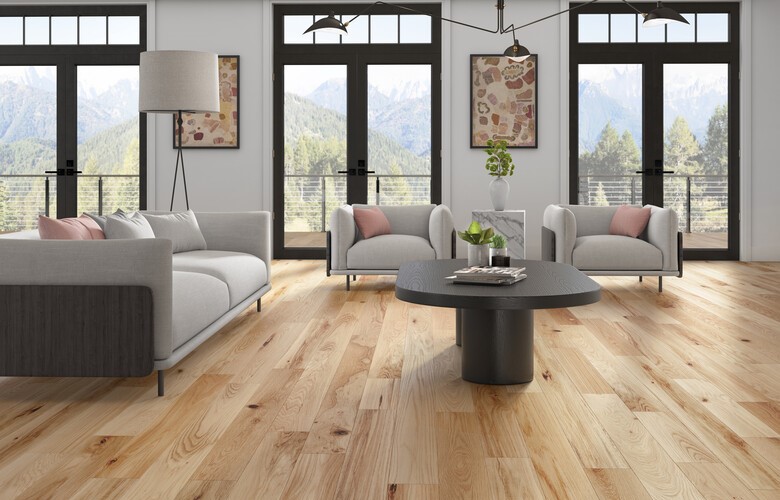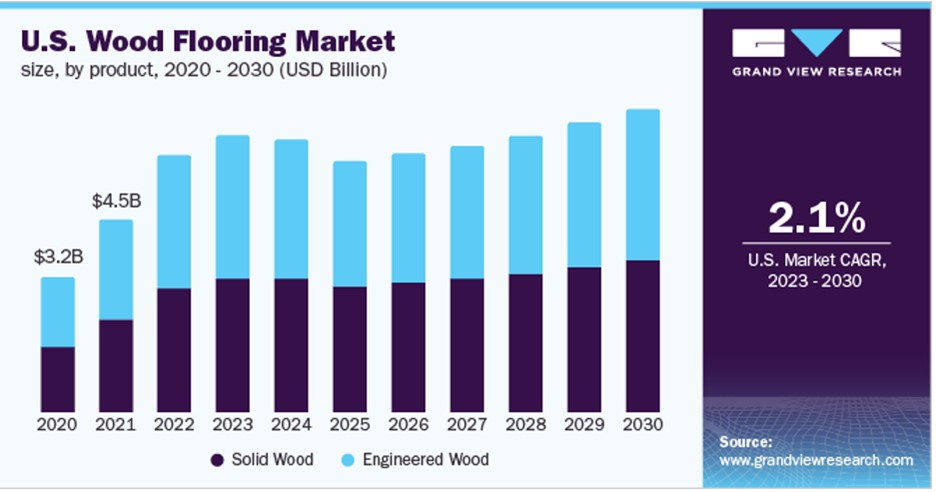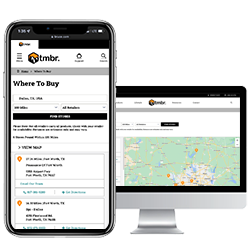What is Engineered Hardwood Flooring?
February 26, 2024 | By tmbr® Product Expert

Maybe you’ve heard of engineered hardwood flooring. But even if you have, do you understand how it differs from other flooring products, especially solid hardwood?
For example, are you aware that it accounted for the largest share of the North American market in 2022? That means it outpaces solid hardwood. And there are some solid, good reasons why. You’ll learn more about them as you read on.

Engineered Wood Flooring Construction
Let’s start with how the flooring is made, as it differs substantially from solid hardwood.
As you can likely gather, solid hardwood planks consist of a single piece of wood. So, the plank is wood from top to bottom. But that’s not the case with engineered flooring.
Engineered hardwood uses a thin layer of hardwood on its top and bottom. However, in between, it uses multiple layers of cross-layered plywood. Those layers glue and press together to form a strong bond.
That bond adds dimensional stability to the flooring. In layperson’s terms, planks are less likely to expand and contract. That boosts engineered hardwoods’ ability to fend off water damage. Compare that to natural wood readily absorbing water, leading to warping concerns.
The hardwood veneer layer typically uses an aluminum oxide coating that adds to its ruggedness. Aluminum oxide is one of the hardest coatings available and resists scratches beautifully.
How Does Engineered Hardwood Differ from Solid Hardwood?
We’ve already presented the chief difference in their construction. That difference delivers improved water resistance. As a result, you can use engineered wood in rooms where solid wood flooring faces challenges.
For example, it’s best to steer clear of solid hardwood floors in basements. Sometimes, you might even want to avoid it in kitchens or powder rooms where splashing water causes concerns.
You can install engineered hardwood on any level in your home. So, engineered wood is more versatile in the world of hardwood flooring options.
Installation of Engineered Hardwood
You can install the flooring on any level, but installation is more forgiving than solid hardwood. Like hardwood, you can install it using staples or nail it to a subfloor.
However, you can also glue it or float the flooring even more conveniently. That gives you flexibility with subflooring. It also makes installation less time-consuming and more slanted to a DIY install.
The Cost of Engineered Hardwood vs. Solid Hardwood
Engineered hardwood tends to be more budget-friendly than solid hardwood. Its multi-layer construction allows for using less expensive wood species for the core layers. Less use of solid wood means reduced costs.
So, a white oak engineered floor typically costs less than the same flooring that’s solid. Costs can level out by installing a more exotic species of engineered hardwood vs. an everyday solid hardwood.
Ignoring costs, people often consider engineered flooring a more sustainable solution because it uses less hardwood.
Design Options Using Engineered Hardwood Flooring
If you can do it with solid hardwood, you can do it with engineered hardwood.
First, you can choose from various wood species, including oak, maple, hickory, cherry, and more. Each species has unique grain patterns and colors, allowing you to achieve the desired look.
Second, engineered hardwood is available in different finishes, such as matte, satin, or high-gloss. Moreover, you add character and depth to your flooring with surface textures like hand-scraped, wire-brushed, or distressed finishes.
Third, engineered hardwood planks come in various widths and lengths. Indeed, you’re more apt to get engineered hardwood with wide planks versus solid.
The Downside of Engineered Wood vs. Solid Hardwood
Engineered wood outlasts vinyl flooring by a solid distance. But where it falls somewhat short of solid hardwood is longevity.
Solid hardwood floors are typically three-quarters of an inch thick. Why does that matter? It allows you to sand and refinish them multiple times, from four to six times, by most accounts. Consequently, you can install hardwood floors once, and they’ll likely last you a lifetime and more.
Engineered wood flooring is also typically three-quarters of an inch. But remember. It’s not solid.
The hardwood veneer is generally 2mm to 6mm thick. With a 2mm layer, you might be unable to sand and refinish your flooring.
Even with a thick top layer of 6mm, you won’t be able to rework your floors as often as solid hardwood. Typically, you can do so up to three times.
Engineered Hardwood vs. Vinyl Wood Looks Alternatives
You can look to hardwood alternatives in rooms with moisture concerns from humidity or splashing. For example, luxury vinyl is a growing option. It looks like genuine hardwood flooring, and it’s generally waterproof.
But vinyl alternatives lack the genuine hardwood feel. Engineered is hardwood flooring with an added benefit. Again, its wear layer is bona fide wood, red oak, white oak, hickory, or maple.
Engineered wood flooring also typically outlasts vinyl products. Many luxury vinyl products carry 30-year warranties.
Compare that to TMBR, which offers a 50-year residential warranty on engineered hardwoods. You’ll likely never have to replace your engineered hardwood.
Engineered Hardwoods Designed to Last
TMBR offers a nature-inspired collection of 31 engineered hardwood styles. It focuses on bringing the outdoors indoors, capturing today’s design trend.
You can select from:
• Big Sur
• Yosemite
• Trailhead
• Blue Ridge
• Saddleback
• Acadia
Using the floor visualizer tool, you can also see how the flooring looks in your room. It lets you snap a picture of your room, select a floor, and view it instantly in your room.
When you’re ready to buy, use the store locator to find a local dealer.

Ready to shop for tmbr® flooring near you?
Use our retail locator to find where you can buy tmbr® engineered flooring products.
Find a Store